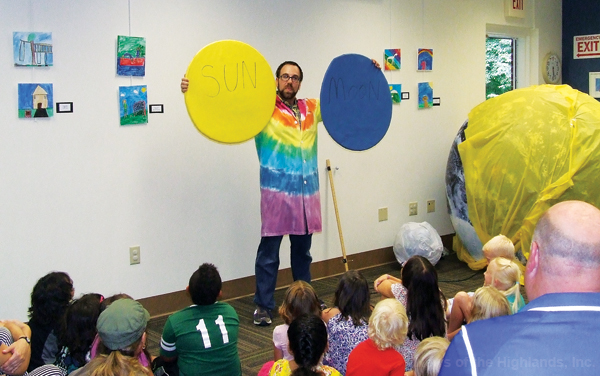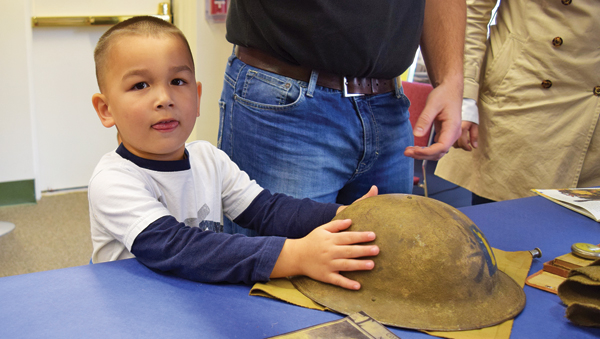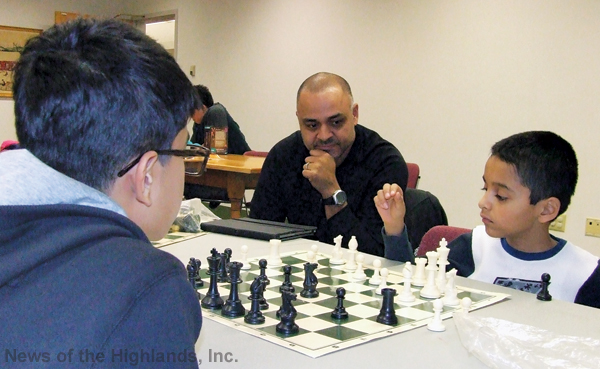
Dr. David Kashinski is a professor of physics at West Point. When he was eight years old he viewed an eclipse without any protective glasses. That night he experienced the traditional symptoms — light sensitivity, watery eyes, blurred vision.
It didn’t take long for his father to figure out what was wrong. Being a welder, he was familiar with “the flash” — the visual problems caused by a sudden exposure to bright light. He brought David to the doctor and within a day or two the youngster was fine.
The consequences could have been more severe. Dr. Kashinski emphasized the risk as he spoke to a packed room at the Cornwall Public Library on Aug. 14. Actually, he spoke to two packed rooms. There wasn’t enough space for everyone. So half the crowd waited outside, and got to hear the presentation when the first group was finished.
Dr. Kashinski, wearing a tie-dyed shirt, warned adults and children not to follow his example. He made them promise they wouldn’t look at the eclipse without protective glasses. Then he aimed a bright light at the members of the audience. People instinctively squinted. It’s a protective mechanism.
“You should have seen what you looked like,” the professor quipped after turning off the light. Squinting is a reflex, but it doesn’t occur during an eclipse. You can stare at the sun and not feel the effects until later.
“It’s a big deal, but you shouldn’t look at it without the proper protection.”
Sunglasses aren’t the answer. The glasses distributed at the end of the talk will provide much more protection. When Dr. Kashinski put them on, he couldn’t see the audience in front of him. He could barely distinguish a bright light at the other end of the room.
He advised people that handling the glasses or touching the lenses could erode their protective surface. He suggested that people put the glasses away until they’re needed for the Aug. 21 eclipse — which will last from 1:30 to 4 p.m. A little more than 70 percent of the sun will be covered.
What causes an eclipse? The professor explained the phenomenon, using a six-foot sphere to represent the sun, and two marbles in place of the earth and moon. The moon is 400 times smaller than the sun, but also 400 times closer to earth. So the two objects appear to be the same size. When they’re lined up, one blocks out the other.
“It’s a big deal,” Dr. Kashinski said, “but you shouldn’t look at it without the proper protection.”



